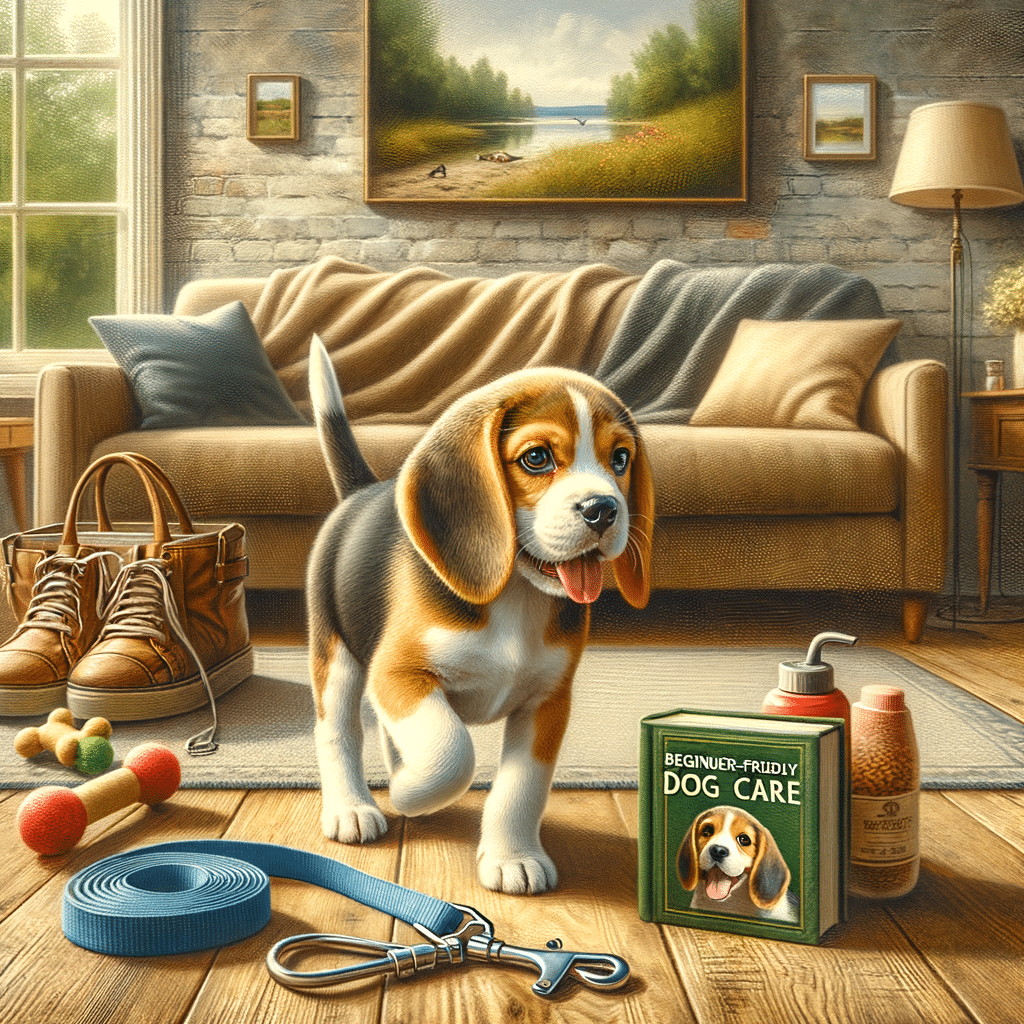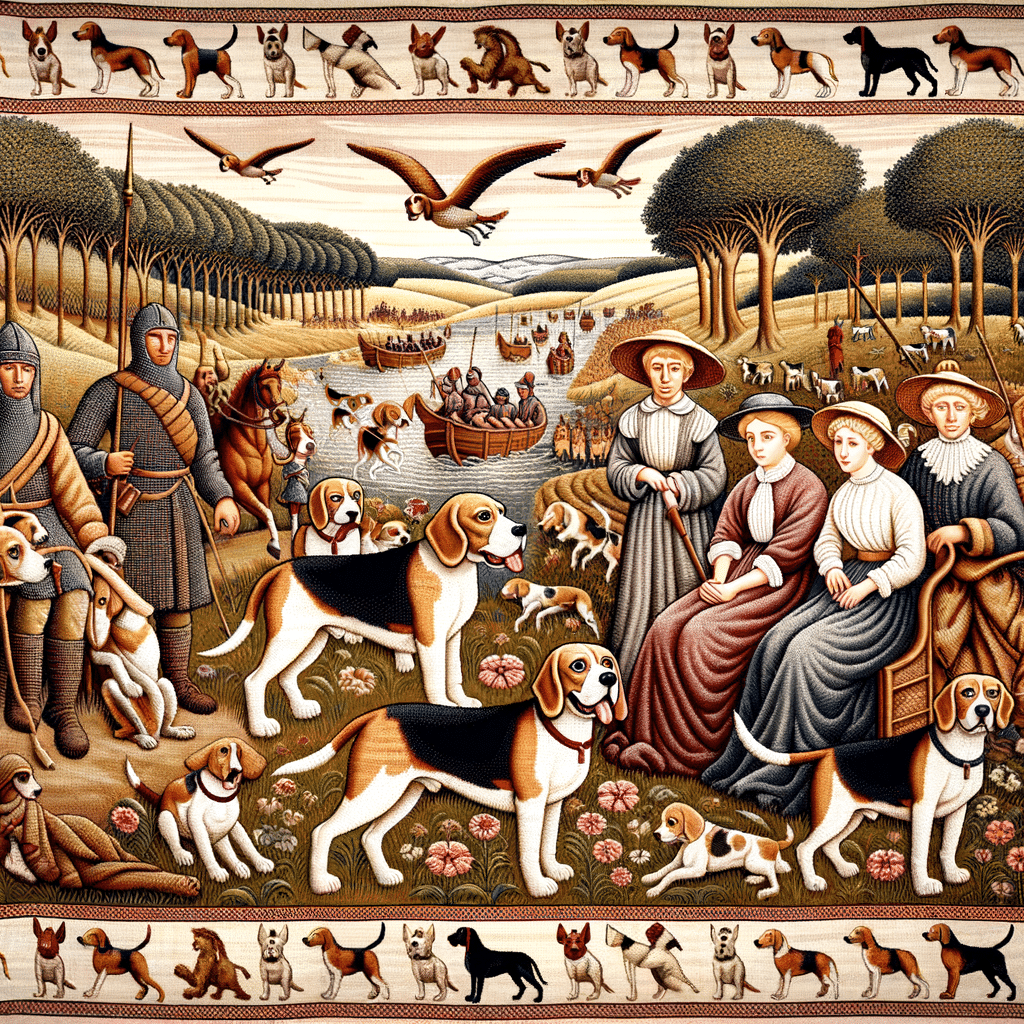Beagles are known for their even temper and gentle disposition. As members of the hound group, they have an incredible sense of smell and tracking instincts, which historically made them superb hunting dogs. Despite their keen hunting skills, they are commonly considered wonderful family dogs due to their size, affectionate nature, and minimal grooming needs. Their compact, muscular bodies and a friendly, curious expression make them an appealing choice for many potential dog owners.
In This Article
Beagles are intelligent, friendly, and great with children and other pets. They are known for their loyalty and playfulness, making them well-suited for active households. However, they possess a high level of curiosity and a keen sense of smell, which can sometimes lead them into trouble if they catch an enticing scent. This intelligence and independence require consistent training and mental stimulation to prevent mischievous behavior.
Highlights
- Beagles are great family companions with a friendly nature.
- Their strong sense of smell and hunting past requires active mental and physical stimulation.
- Early and consistent training is essential due to their intelligence and curiosity.
Breed History and Origin
The beagle originated as a hunting dog adept at tracking small game. Its development is marked by evolving into a friendly and intelligent companion, proving its versatility in the field and at home.
Historical Purpose of Beagles
Beagles were originally bred for their exceptional ability to hunt small game, primarily hares and rabbits. Their keen sense of smell and stamina made them excellent hounds, working closely with hunters. These working dogs fulfilled roles in hunting and search and rescue due to their tracking abilities. With a history that can be traced back to ancient Greece, the modern beagle’s ancestors were present in England before the Roman legions arrived in 55 B.C.
The breed we recognize today was meticulously developed in England. By the 18th century, two distinct breeds had emerged: the southern hound and the northern country beagle or northern hound. The beagle’s design as a hunting companion involved a smaller stature, enabling the hunter to follow on foot, and a friendly nature that allowed them to work well in packs.
In the 19th century, American breeders began to refine the beagle for its hunting prowess. By 1885, the American Kennel Club recognized the beagle as a member of the hound group, solidifying its place both in sporting circles and as a beloved household pet. This acknowledgment marked the official transition of the beagle from a specialized hunting dog to a multifaceted breed that excels in various dog work roles and is cherished as a family companion.
Physical Characteristics
The physical characteristics of the beagle breed define their recognizable appearance, which includes a sturdy build, a varied coat color palette, and dimensions that categorize them as small to medium-sized dogs.
Beagle Appearance
Beagles are known for their soft, pleading eyes, usually brown or hazel. Their long, floppy ears frame their face, contributing to their expressive and friendly appearance. A distinguishing feature is the white tip on their tails, referred to as the “flag,” which is particularly visible on a scent trail.
Size and Weight
Fully grown beagles stand about 13 to 15 inches at the shoulder for the two recognized varieties. Their weight is proportionate to their height, typically 20 to 30 pounds, establishing them as a breed well-suited for companionship and active lifestyles.
Coat and Colors
The beagle’s coat is medium-length and weather-resistant, often described as a double coat with a soft undercoat and a stiffer outer coat. Beagles shed moderately year-round. While the coat comes in any actual hound color, some common color patterns include:
- Tri-color (black, white, and tan)
- Lemon beagle (light tan and white)
- Blue tick beagle (blue and white spots/freckles over black)
Notably, the pocket beagle, a smaller breed version, shares the same coat characteristics.
Personality Traits
Beagle breeds are known for their friendly and affectionate temperament. They demonstrate a balance of energy and sociability, requiring regular exercise and being the quintessential family pet.
Typical Temperament
Beagles exhibit a happy-go-lucky temperament characterized by their cheerful and curious nature. They are friendly and pleasant, often getting along well with other dogs and pets. However, beagles can be stubborn, affecting training and behavior. Consistent and patient training from an early age is crucial to manage this trait.
Family and Social Behavior
In a family setting, beagles are known for their loyal companionship and affectionate behavior towards adults and children, establishing themselves as integral family members. They thrive on human interaction and are generally excellent with kids due to their gentle and tolerant nature. Their amiable disposition also makes them a top choice for those seeking pets that can adapt to various social situations.
Exercise and Activity Needs
Beagles possess a medium energy level and require regular exercise to maintain their health and happiness. They are natural explorers and benefit significantly from activities that engage their senses, such as scent games or fenced-yard play. It’s important to note that beagles may howl or become destructive if they don’t receive sufficient physical and mental stimulation. Daily walks, playtime, and secure outdoor spaces are recommended to meet their activity needs.
Health and Care
Caring for beagles involves understanding their specific health needs and grooming requirements. A balanced diet, awareness of common health problems, and routine grooming are essential to maintaining a beagle’s well-being.
Diet and Nutrition
Beagles have robust appetites and can be prone to obesity, making diet management crucial. Their diet should be high-quality and appropriately portioned based on size, age, and activity level. Pet parents should provide a mix of dry kibble, wet food, and healthy treats, ensuring the food meets their nutritional needs for proteins, fats, and carbohydrates.
Common Health Issues
Beagles may suffer from several health issues, which diligent care can help mitigate:
- Obesity: Regular exercise and proper diet are vital to prevent obesity.
- Allergies: Require precise diagnosis and management.
- Cherry Eye: A condition where the gland in the third eyelid protrudes, often needing surgical correction.
- Epilepsy: It can be present in the breed and may need life-long treatment.
- Ear Infections: Due to their floppy ears, regular cleaning helps prevent infections.
- Hypothyroidism: Causes metabolism issues; treatable with medication.
- Hip Dysplasia: A genetic condition that can be exacerbated by excessive weight.
- Diabetes: Requires dietary adjustments and medical supervision.
Grooming Requirements
Despite their low-maintenance coat, beagles still require regular grooming.
- Coat: Requires weekly brushing to minimize shedding.
- Ears: Check regularly for signs of infection and clean them to prevent buildup.
- Nails: Trim monthly to avoid discomfort and mobility issues.
- Dental: Teeth should be brushed regularly to prevent periodontal disease.
Frequently Asked Questions
This section provides insight into beagle dogs’ specific character and behaviors, helping prospective owners better understand the breed.
What are some common personality traits of beagle dogs?
Beagle dogs are widely recognized for their intelligence, curiosity, and strong sense of smell. They exhibit a friendly and sociable nature, which makes them great companions.
How does the beagle’s personality suit family life?
The beagle’s friendly disposition and energetic spirit make it an excellent fit for families. They tend to be good with children and enjoy being part of household activities.
What should potential beagle owners know about their barking tendencies?
Potential beagle owners should know that the breed is known for its vocal nature, including barking and howling. This trait can be managed with training and proper stimulation.
Are beagles generally considered to be affectionate and cuddly dogs?
Beagles are affectionate and enjoy cuddling. They often seek the attention and warmth of their human companions. They thrive on interaction and express their love openly.
Do female and male beagles typically show personality differences?
While individual personalities can vary widely, there are no consistent, significant differences in temperament between female and male beagles.
Are beagles lap dogs?
While beagles enjoy affection, their moderate size and energetic nature mean they are not typically lap dogs. They are curious and love to move and explore.






